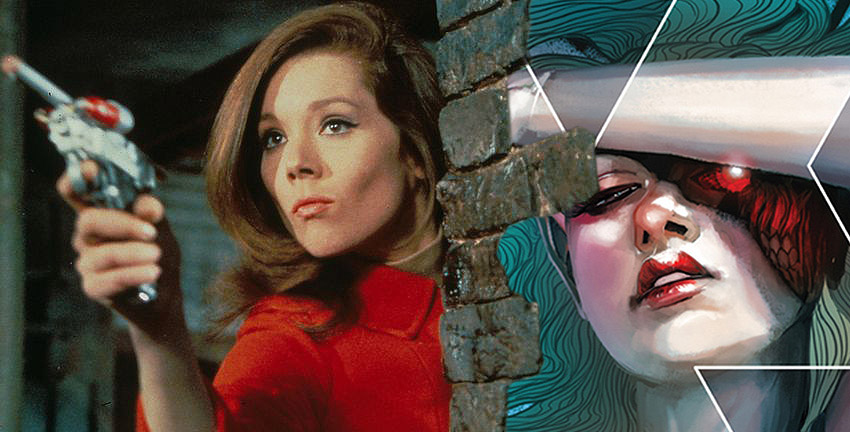Curb Stomp Review
Written by Ryan Ferrier
Illustrated by Devaki Neogi
Colors by Jeremy Lawson w/Neil Lalonde
Letters by Colin Bell
Review by John Dubrawa

Don’t get me wrong, I think the concept of Curb Stomp is super rad. Taking place in Old Beach, one of three distressed boroughs of an undisclosed flourishing city (simply called The City), Curb Stomp follows five women known as The Fever–all of them with badass roller derby-esque names (like Machete Betty and Violet Volt)–who become embroiled in a heated gang war after taking out a rival gang member in self-defense during a routine nightly patrol of the streets. Little do the Fever know that the mayor of The City, Bowley, is pulling the proverbial strings, pushing for the gangs in the boroughs to take each other out, thus eliminating the threat of crime on the streets and cementing his campaign for reelection. It’s part The Warriors, part grindhouse flick, and all the schlock that comes with both. Best of all, Ferrier totally nails the ending; it’s satisfying and bloody in exactly the right way.
But while having five tough-as-nails ladies in the lead role is commendable, the characters lack any significant development along their journey. There’s a severe lack of distinguishing characteristics between the women, and when a way to discern them presents itself in the plot–such as Derby Girl’s drug addiction or Betty’s need to protect her little sister–these are written-off as if they were inconveniences rather than hurdles for the characters to overcome. Literally there is a sequence in which Betty rescues her little sister from the clutches of evildoers, and then drops her off with a TOTAL STRANGER so that she can resume fighting. Similarly, Derby’s drug addiction is unceremoniously concluded after another character tells her “she doesn’t need” her drugs. Both are missed opportunities to elevate the characters beyond their pension for fighting and being all-around badasses.
When it comes to the visual storytelling of Curb Stomp, artist Devaki Neogi lends a pop-art-like style while colorist Jeremy Lawson splashes each page in a bright neon palette. Their collaboration certainly helps tie the book to the story’s late 70s/early 80s feel where all that’s missing is a soundtrack with a synthesizer. But further into the series, the lack of fluidity in Neogi’s characters becomes an issue, particularly when Ferrier’s script gets more action-heavy. Lawson’s color palette, while at first unique, inevitably becomes distracting. Oftentimes on the same page the color will switch drastically between panels, even when the scene hasn’t changed. This results in a disorientation when attempting to suss out which characters are which in the busier panels, to the point where I honestly couldn’t tell you the hair, skin, or clothing color of any of the main characters. The color palette changes that much.
VERDICT
Give it a look. Conceptually, I like the premise of this book; I love its attitude and its setting even more so. It’s very reminiscent of The Warriors with a little grindhouse cult-movie feel to it as well. However, the characters are lacking some much-needed depth and the art and colors are a big misstep for me personally. But I understand that these are not things that will get under every reader’s skin, especially one looking for a more escapist entertainment. So flip through Curb Stomp, see if the book strikes you visually, and then give it a read.











